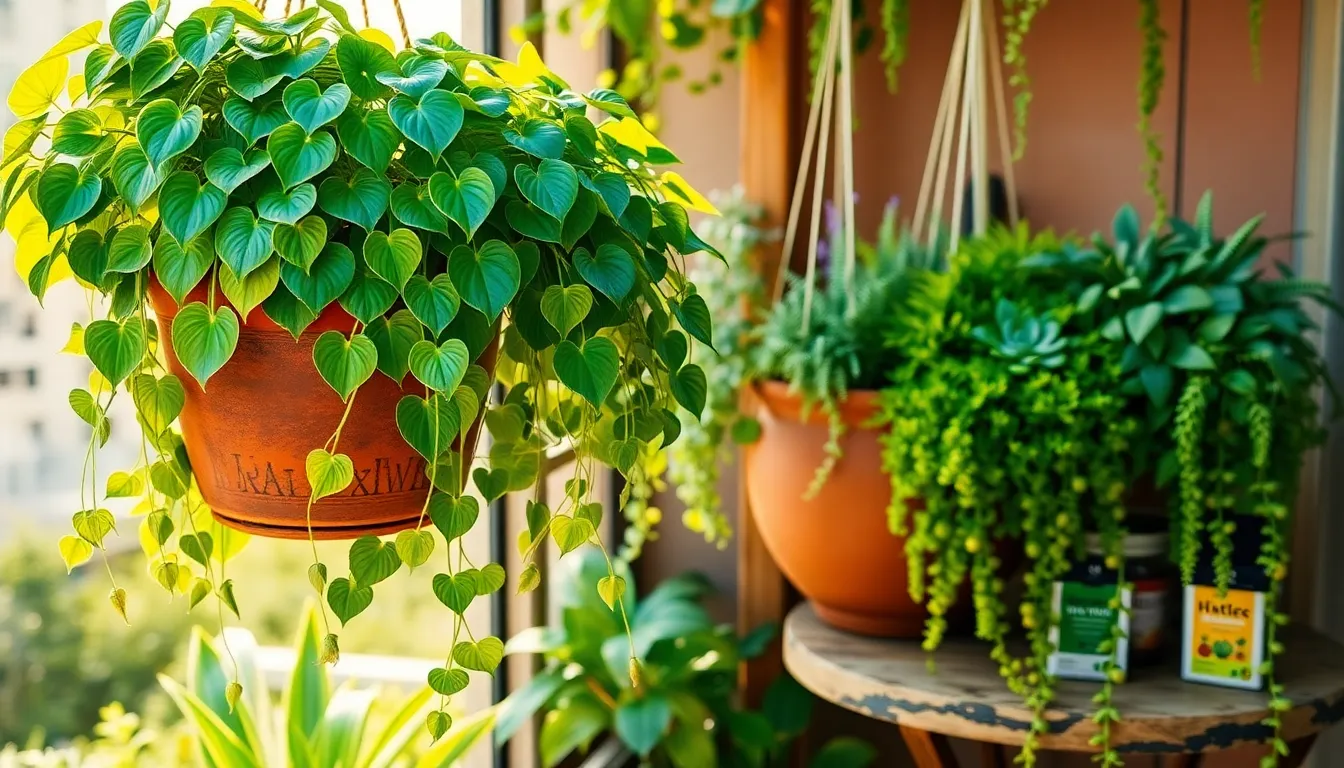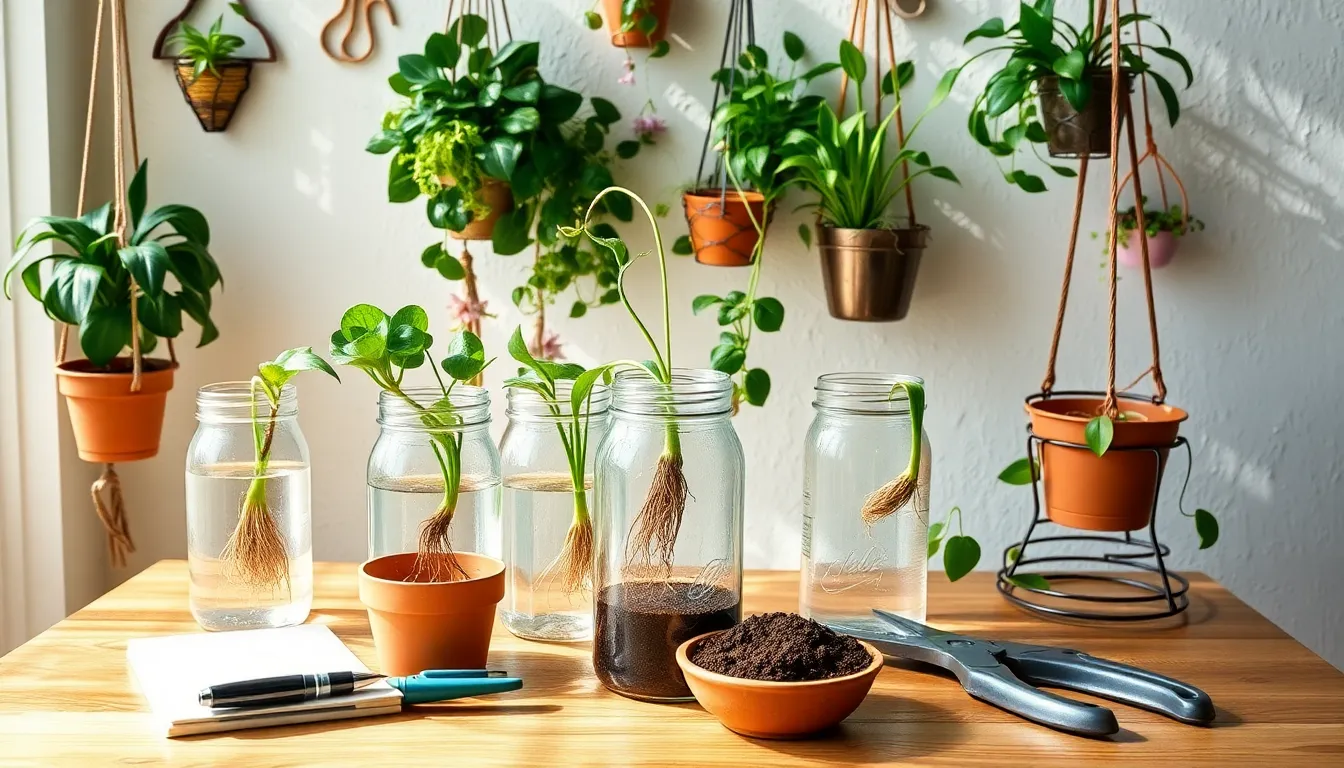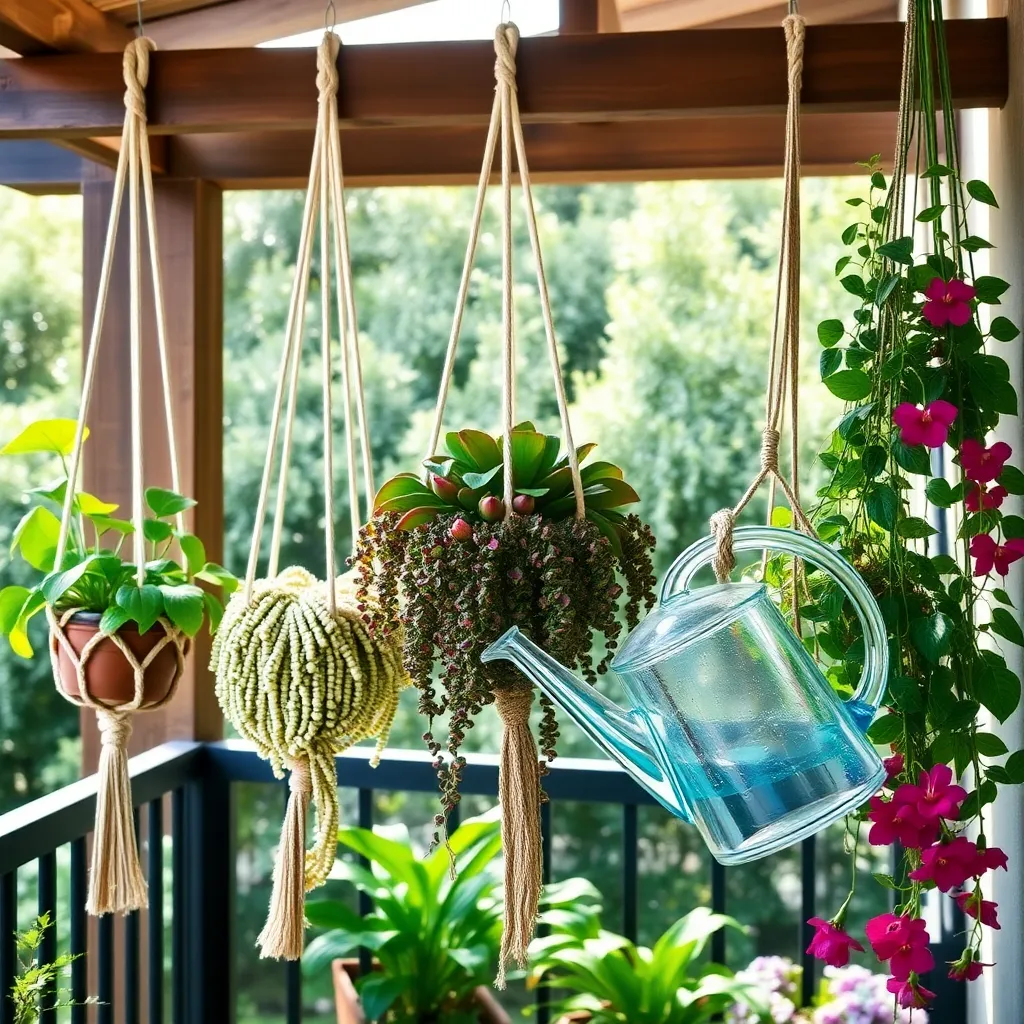In the world of gardening, few experiences are as rewarding as watching your plants transform your living space into a lush, vibrant oasis. Whether you’re just starting your green journey or you’ve been nurturing plants for years, hanging plants offer a unique opportunity to elevate your home décor and showcase your love for nature in a stylish, space-saving way.
Hanging plants bring a touch of elegance and whimsy, turning any room into a snapshot-worthy sanctuary. Our carefully curated list of 11 Instagram-worthy hanging plants will introduce you to both classic favorites and trendy newcomers, ensuring there’s something for every plant enthusiast. From cascading vines to delicate blooms, these selections promise not only to beautify your space but also to thrive with your care.
You’ll discover the secrets to keeping these plants healthy and happy while enhancing your indoor aesthetics. With practical tips on light, watering, and placement, this guide is designed to empower both novices and seasoned gardeners alike. So, let’s dive in and explore how you can create your own stunning plant display that is sure to captivate and inspire.
Choosing Instagram-Ready Hanging Plants
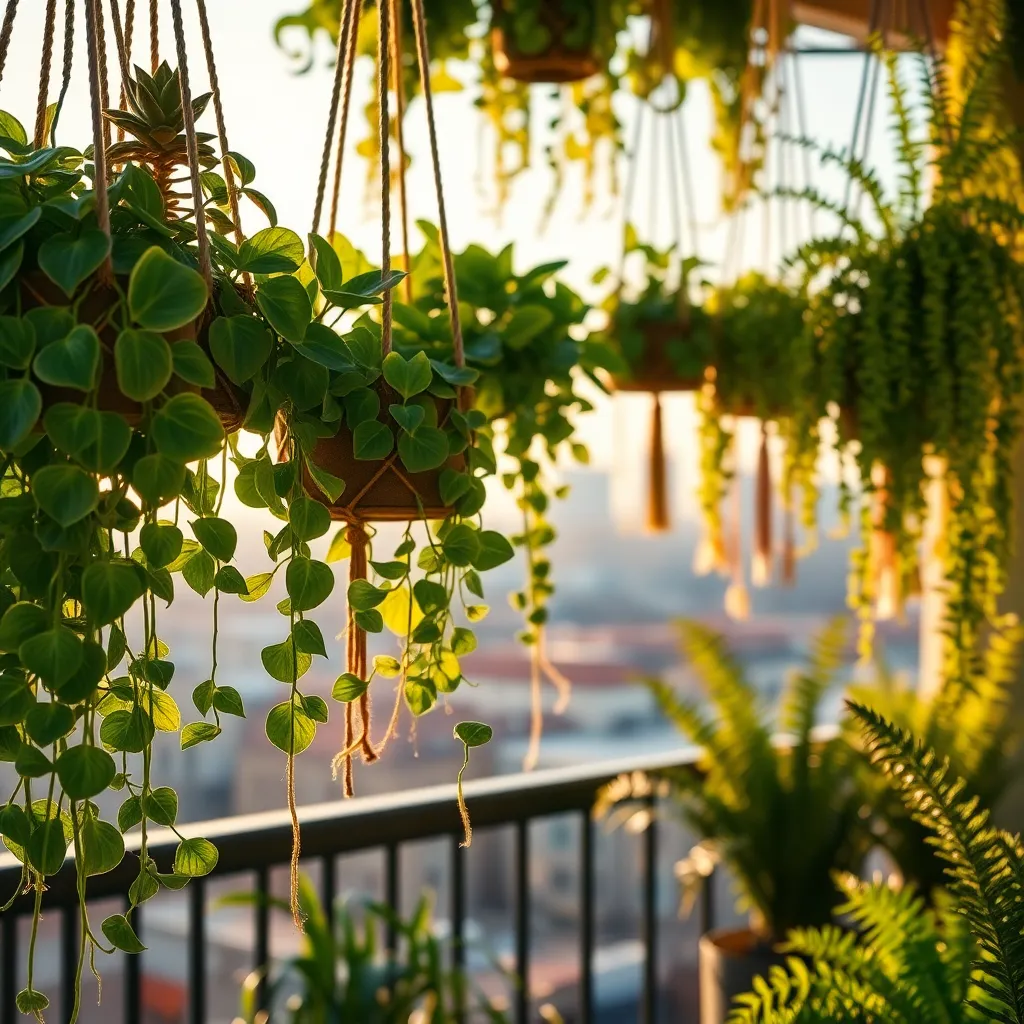
Choosing Instagram-ready hanging plants involves finding varieties that not only look stunning but also thrive in your specific environment. Consider factors such as light availability, humidity levels, and temperature to ensure your chosen plants can flourish.
Begin by evaluating the light conditions in your space, as this will significantly influence plant selection. For bright, indirect light, consider options like String of Pearls or the trailing Pothos, which are both eye-catching and relatively easy to maintain.
For indoor spaces with medium to low light, look into plants like the Heartleaf Philodendron or the Spider Plant. Both can adapt well to less-than-ideal lighting conditions and add a lush, vibrant look to your décor.
When it comes to soil, hanging plants generally prefer a well-draining mix to prevent root rot, which is essential for their health and longevity. A blend of potting soil, perlite, and orchid bark can strike the right balance of moisture retention and aeration.
Watering frequency is another critical aspect, and it depends on the plant species and environmental conditions. As a general rule, allow the top inch of soil to dry out between waterings for most hanging plant varieties.
Advanced plant lovers might experiment with adding slow-release fertilizers to their watering routine to promote vigorous growth and vibrant foliage. This ensures that your hanging plants remain lush and camera-ready, providing a constant source of green inspiration for your Instagram feed.
Discover the Beauty of String of Pearls
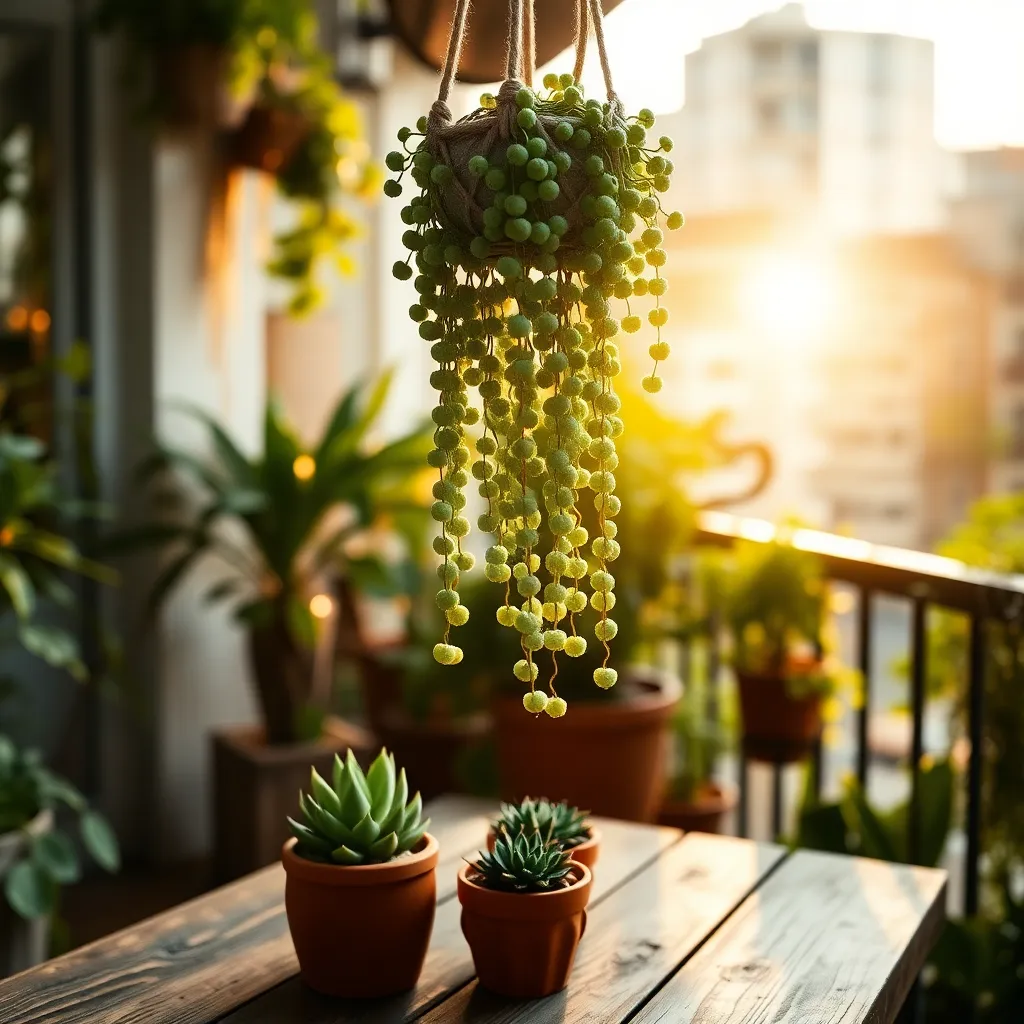
The String of Pearls plant, known for its unique bead-like foliage, is a stunning addition to any hanging garden setup. Its cascading strands create a captivating visual effect, making it a perfect choice for an Instagram-worthy display.
To keep your String of Pearls thriving, ensure it receives plenty of indirect sunlight. Direct sunlight can scorch the leaves, so placing it near a bright window with filtered light is ideal.
When it comes to watering, allow the soil to dry out completely between waterings to prevent root rot. Use a well-draining cactus or succulent soil mix to ensure proper drainage and avoid waterlogged conditions.
For more advanced care, consider using a balanced liquid fertilizer diluted to half strength once a month during the growing season. Regularly check for pests such as aphids or mealybugs, as these can occasionally be an issue.
Captivating Heartleaf Philodendron Tips
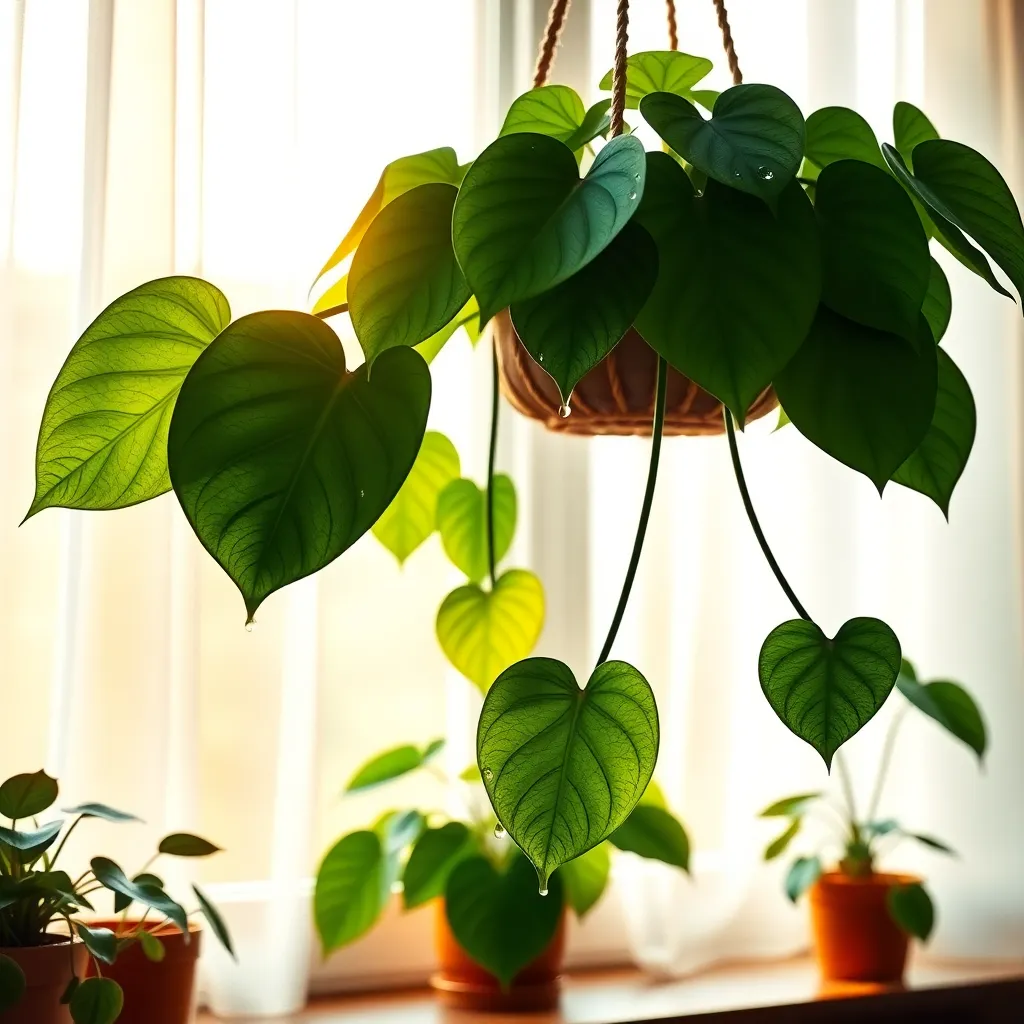
The Heartleaf Philodendron is a classic choice for plant lovers due to its lush foliage and forgiving nature. To achieve its iconic trailing effect, place it in a hanging basket where its vines can cascade gracefully.
Optimal growth occurs when placed in bright, indirect light, although it can tolerate lower light conditions. Ensure the plant thrives by using a well-draining potting mix; a blend of peat moss, perlite, and vermiculite works well.
Water your Heartleaf Philodendron when the top inch of soil feels dry to the touch. Overwatering can lead to root rot, so it’s crucial to allow the soil to dry out slightly between waterings.
For advanced care, consider fertilizing monthly during the growing season with a balanced liquid fertilizer diluted to half strength. Additionally, regularly wiping the leaves with a damp cloth will keep them dust-free and able to photosynthesize efficiently.
Trailing Pothos Varieties to Explore
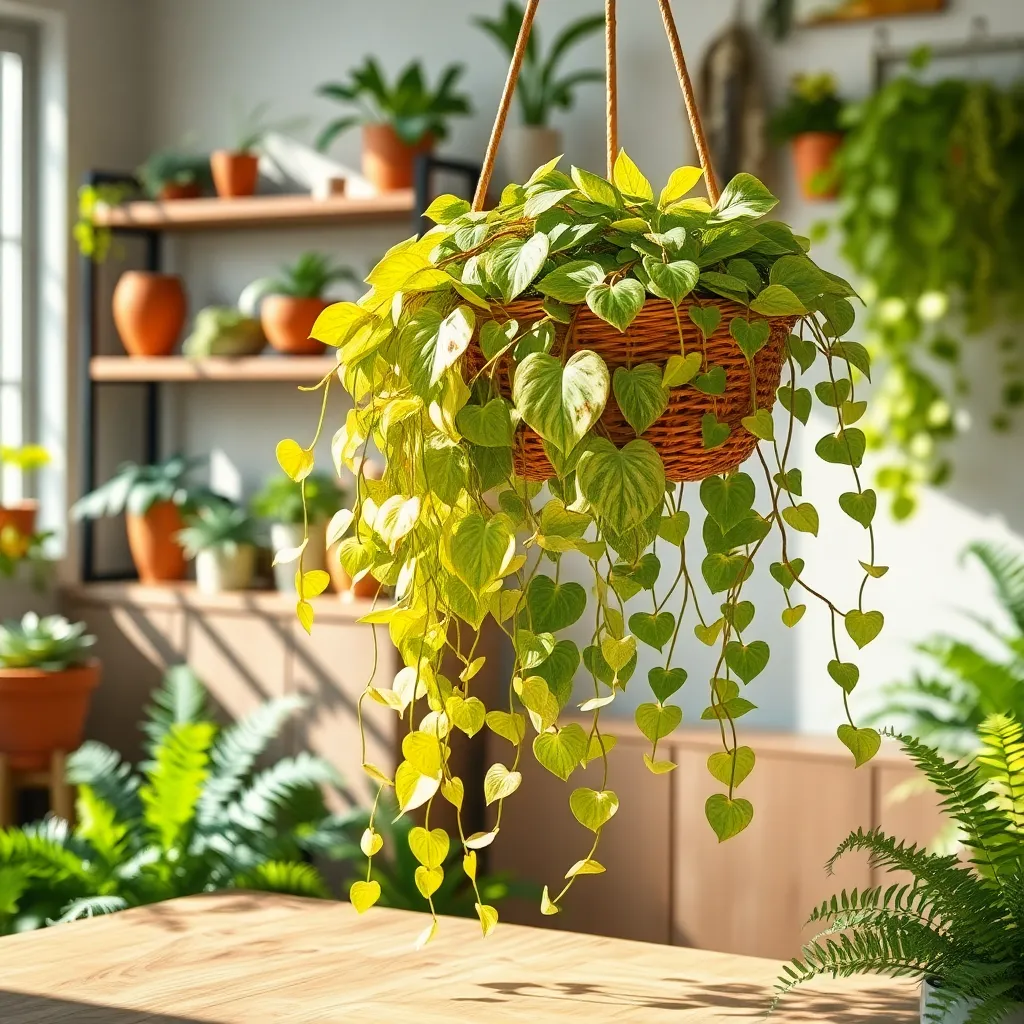
Trailing Pothos varieties are a delightful addition to any plant collection, offering lush foliage and easy care requirements. Golden Pothos is one of the most popular varieties, known for its heart-shaped leaves with striking yellow variegation. To keep your Golden Pothos thriving, place it in indirect sunlight and allow the soil to dry out between waterings. This plant is incredibly versatile, thriving in a range of lighting conditions and making it perfect for beginners.
Another stunning variety to explore is the Marble Queen Pothos, which features creamy white and green marbled leaves. This variety requires similar care to the Golden Pothos, preferring bright, indirect light for optimal leaf coloration. Ensure you water your Marble Queen Pothos when the top inch of soil feels dry, as overwatering can lead to root rot. For a fuller appearance, consider pruning the vines regularly, which encourages bushier growth.
For a splash of color, try the Neon Pothos, known for its vibrant, chartreuse leaves that brighten up any space. Like other Pothos varieties, it thrives in a variety of light conditions but shows the best color in bright, indirect light. Keep the soil consistently moist but not waterlogged, and use a well-draining potting mix to prevent soggy roots. Advanced gardeners might experiment with training the vines along a trellis or wall for an artful display.
To maximize the beauty of your Pothos plants, consider incorporating them into hanging arrangements or letting them trail elegantly from a shelf. These plants are excellent at purifying indoor air, making them not only attractive but also beneficial to your living space. Regularly wipe the leaves with a damp cloth to remove dust and allow for better photosynthesis. With their forgiving nature and stunning appearance, trailing Pothos varieties are a must-have for any plant lover.
Enchanting Spider Plant Features
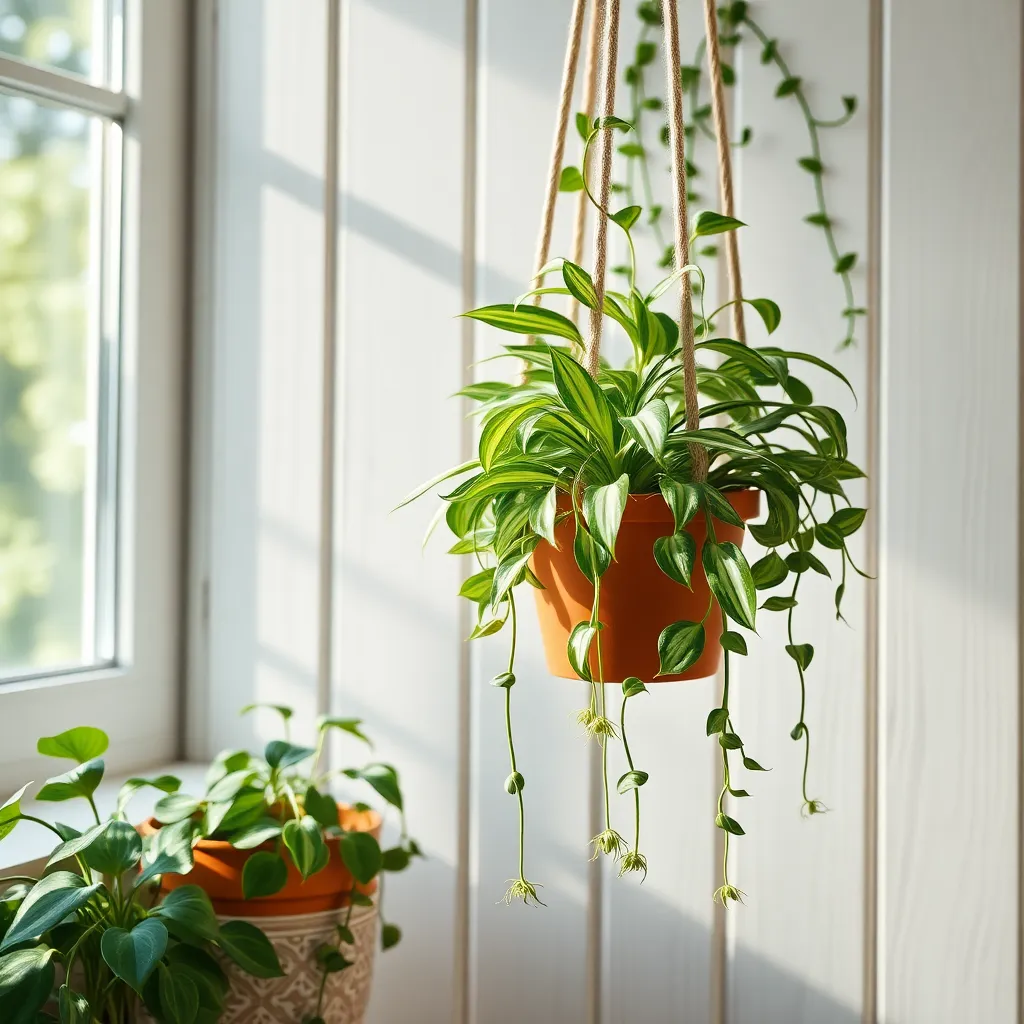
Spider plants, with their arching leaves and tiny offshoots, are truly enchanting additions to any indoor garden. These plants thrive in bright, indirect light, making them perfect for spots near windows where they can bask in filtered sunlight.
For optimal growth, use a well-draining potting mix, such as one containing peat moss and perlite. Water your spider plant moderately, allowing the soil to dry out slightly between waterings to prevent root rot.
Beginners will find spider plants forgiving and easy to care for, as they can tolerate occasional neglect. To encourage the growth of those charming baby spiderettes, fertilize monthly during the growing season with a balanced liquid fertilizer.
Advanced gardeners might experiment with propagation by gently detaching the spiderettes and planting them in fresh soil. Ensure that the new plants receive ample humidity by misting them regularly or placing them near a humidifier.
Caring for the Stunning Burro’s Tail
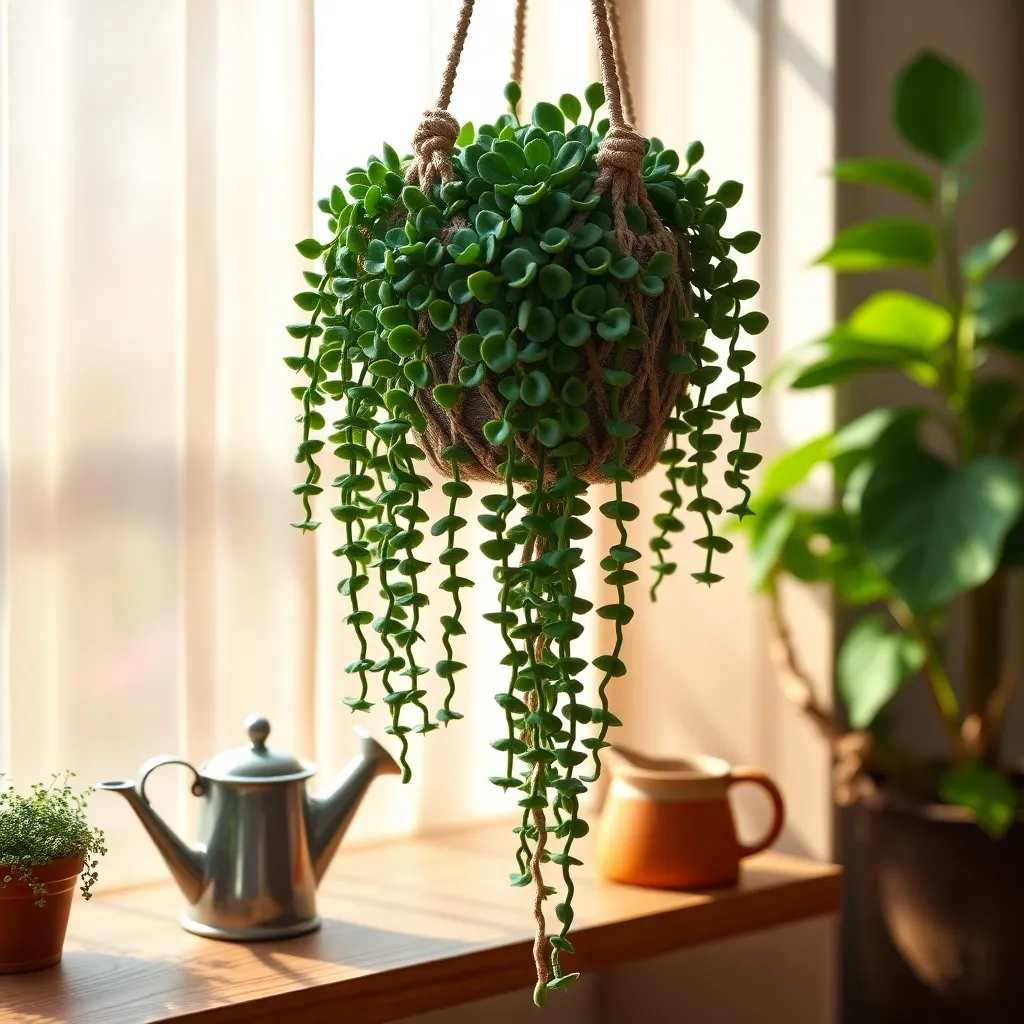
Not only is the Burro’s Tail a true eye-catcher, but it’s also remarkably easy to care for. This succulent thrives in bright, indirect light, making it perfect for a sunny windowsill or hanging basket.
Watering is crucial for keeping your Burro’s Tail healthy, as it prefers to dry out between waterings. Water deeply but infrequently, ensuring that the soil is completely dry before the next watering session.
For optimal growth, use a well-draining cactus or succulent soil mix. This type of soil prevents root rot by allowing excess water to escape, which is essential for the Burro’s Tail’s health.
Advanced gardeners can propagate new plants from stem cuttings. Simply allow the cut ends to callous over for a few days before planting them in moist soil.
Showcasing the Elegant Boston Fern
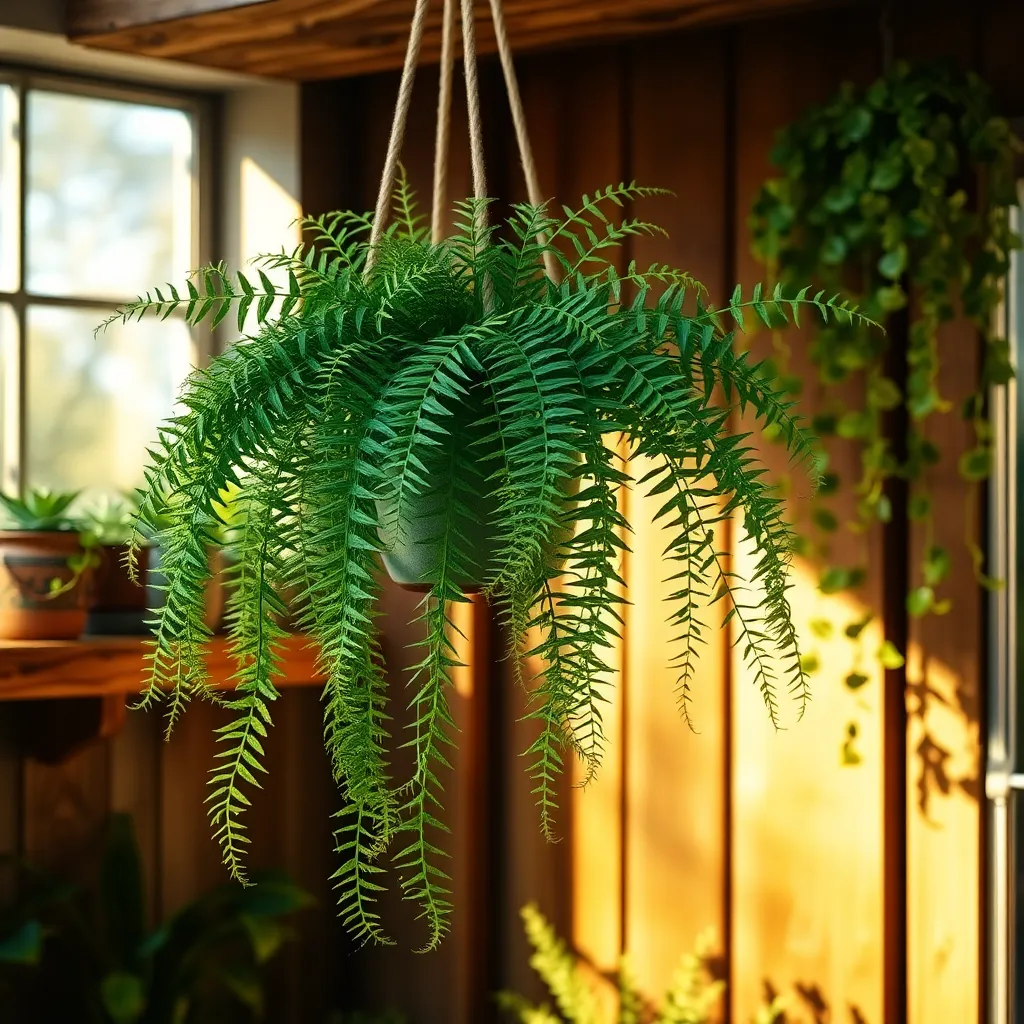
Boston Ferns are an elegant choice for adding lush greenery to your indoor space. They thrive in environments that mimic their natural habitat—think warm climates, high humidity, and indirect light.
To keep your Boston Fern looking its best, water it consistently to maintain evenly moist soil. However, be careful not to overwater; allowing the top inch of soil to dry out slightly between waterings can prevent root rot.
Humidity is crucial for Boston Ferns, so consider placing a humidifier nearby or regularly misting the leaves. Alternatively, you can place the pot on a tray of pebbles and water to create a humid microclimate around the plant.
For those seeking advanced care tips, fertilize your Boston Fern every 4-6 weeks during the growing season with a balanced liquid fertilizer. Ensure you adjust feeding during the winter months, as the plant’s growth slows and it requires fewer nutrients.
Unique Qualities of the Lipstick Plant
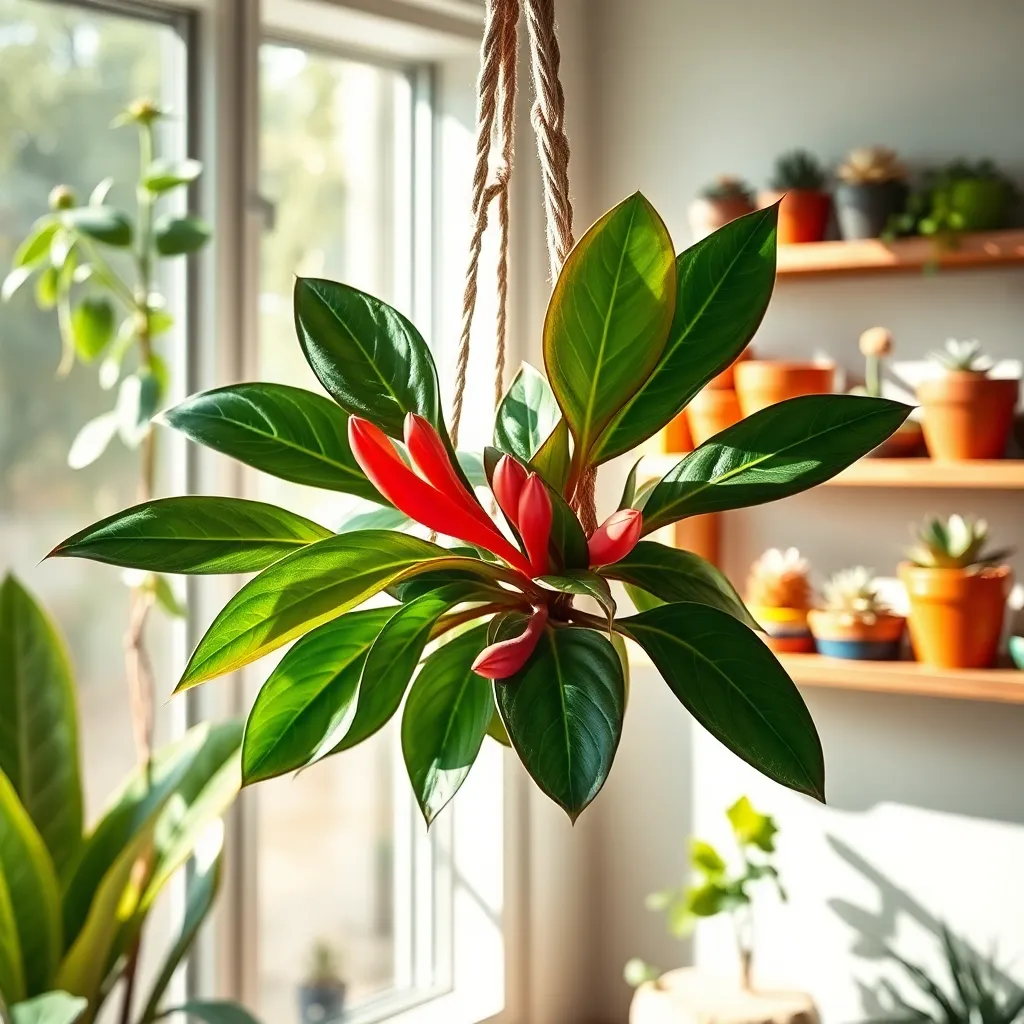
Among the most striking hanging plants, the Lipstick Plant stands out with its vibrant, tubular blooms that resemble a tube of lipstick. This tropical beauty thrives in bright, indirect light, making it perfect for a sunny windowsill or a well-lit room.
To keep your Lipstick Plant healthy, water it when the top inch of soil feels dry, ensuring the pot has good drainage to prevent root rot. A well-draining potting mix, such as one with added perlite or orchid bark, will help maintain the right moisture balance.
Humidity is vital for the Lipstick Plant, as it mimics its native rainforest conditions. You can increase humidity by misting the leaves regularly or placing the pot on a tray filled with pebbles and water.
For those looking to encourage more blooms, consider fertilizing your Lipstick Plant every month during the growing season with a balanced, water-soluble fertilizer. Pruning after flowering can also promote bushier growth and more abundant flowering in the future.
Trailing Tradescantia for Vibrant Display
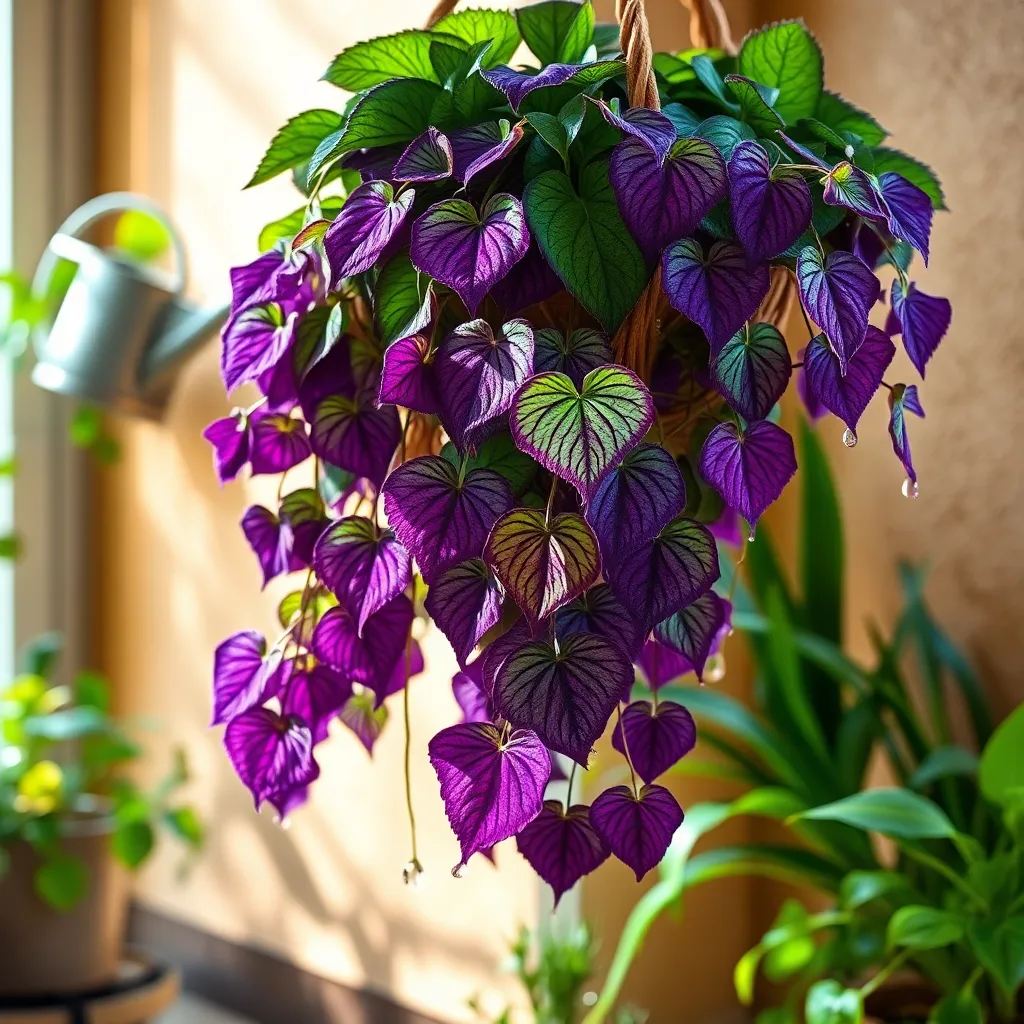
Trailing Tradescantia, often known as Wandering Jew, offers a vibrant display with its cascading foliage in shades of purple, green, and silver. This plant thrives in bright, indirect light, which enhances its striking colors and encourages vigorous growth.
For optimal growth, use a well-draining potting mix, such as a combination of peat moss and perlite. This ensures that the roots do not become waterlogged, which can lead to root rot, a common issue with overwatering.
Water your Tradescantia when the top inch of soil feels dry to the touch, usually every week or two, depending on your home’s humidity. Consistency is key—avoid letting the soil dry out completely, as this can cause the leaves to brown and crisp.
To encourage bushier growth, pinch back the tips of the plant regularly. For those looking to propagate, Tradescantia is incredibly easy to root in water, making it a great choice for beginners wanting to expand their collection effortlessly.
Alluring Asparagus Fern Maintenance
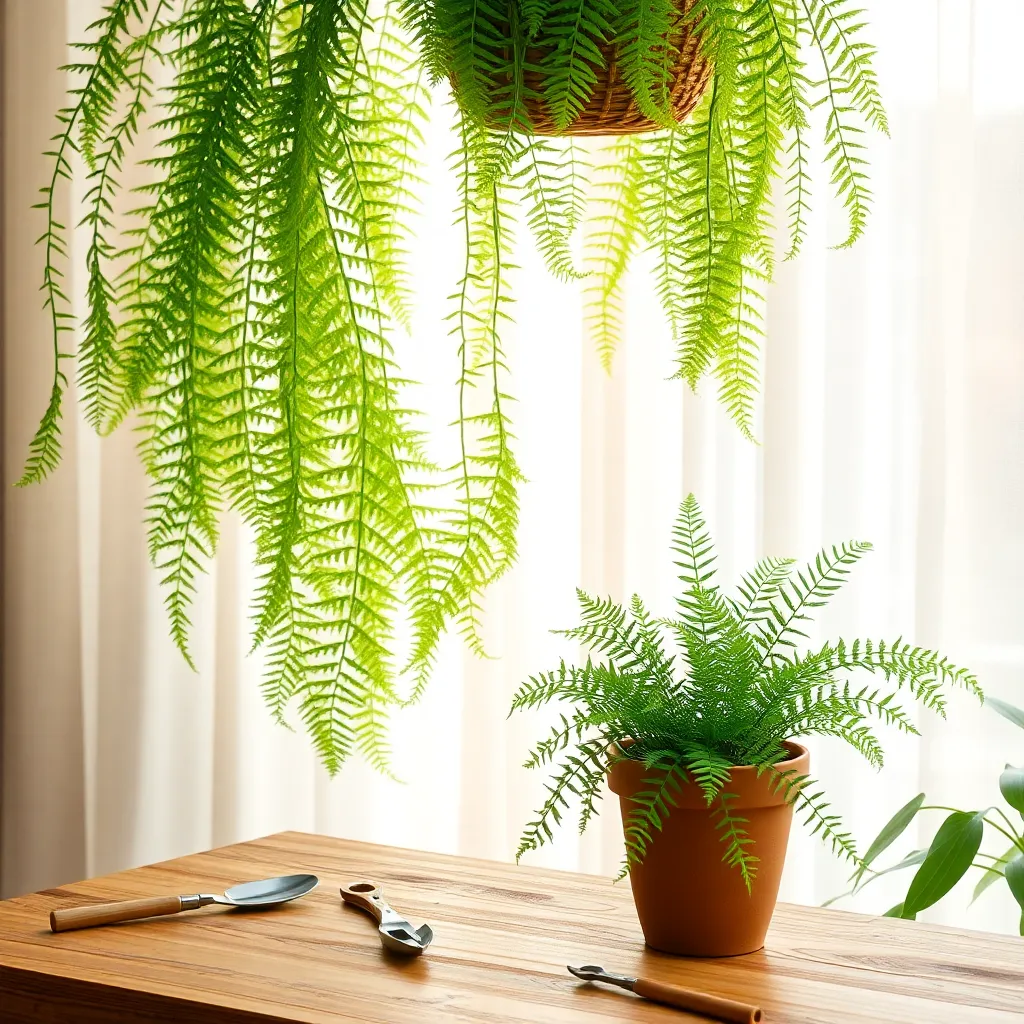
Transform your hanging garden with the delicate allure of the asparagus fern, a plant that thrives with the right care. To keep it lush and healthy, place your asparagus fern in bright, indirect light, which mimics its natural habitat.
When it comes to watering, ensure the soil remains slightly moist but not waterlogged; allow the top inch of soil to dry out between waterings. Using a well-draining potting mix, such as one formulated for ferns, will help prevent root rot and support vigorous growth.
Fertilize your asparagus fern monthly during the growing season with a balanced liquid fertilizer diluted to half strength. This will provide the necessary nutrients for robust foliage and a fuller appearance, making your plant a showstopper.
For more advanced care, consider misting the plant regularly to increase humidity, especially in drier climates or during winter months. Pruning yellow or dead fronds not only keeps the plant looking tidy but also encourages new growth, maintaining its lushness.
Enhancing Spaces with Hoya Carnosa
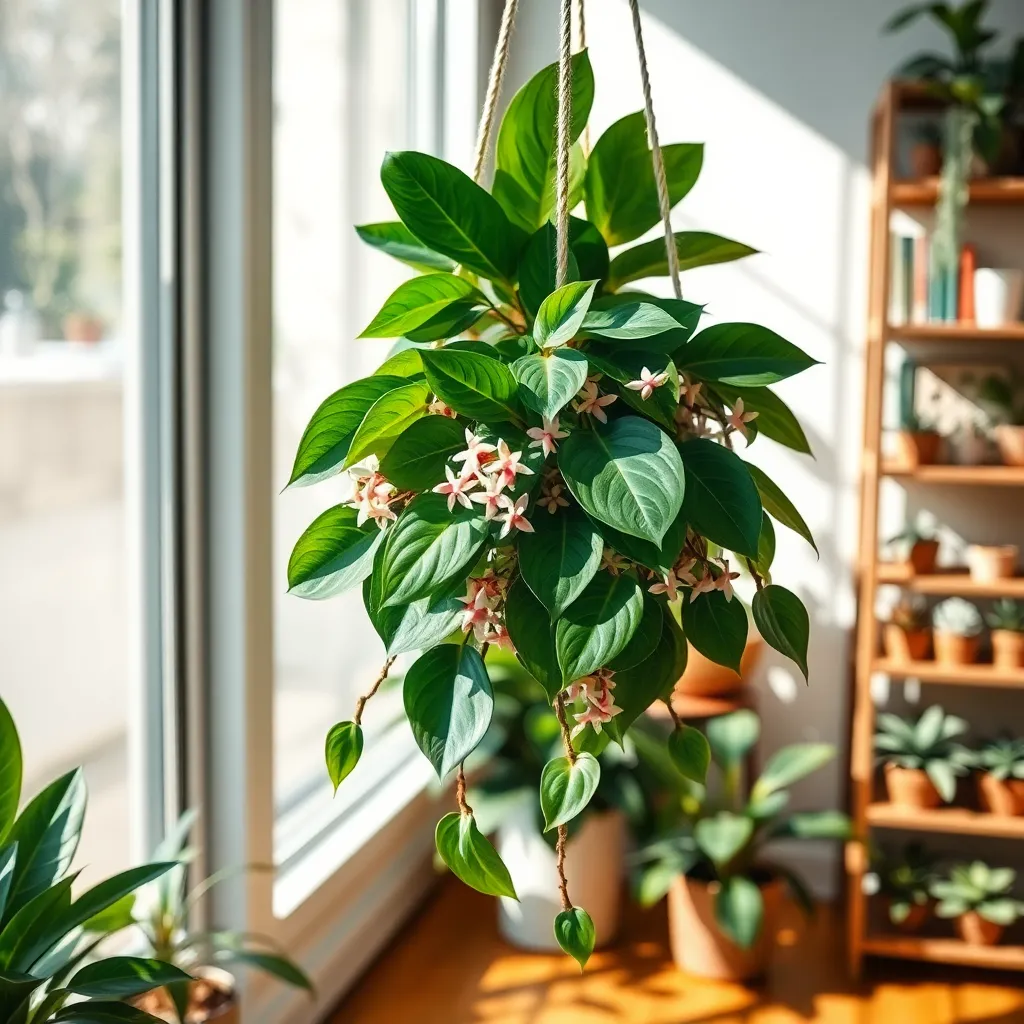
Hoya Carnosa, also known as the wax plant, is an excellent choice for enhancing your living space with its lush, trailing leaves. These plants are not only visually appealing but also fairly easy to care for, making them perfect for both novice and experienced gardeners.
To keep your Hoya Carnosa thriving, it’s essential to provide the right amount of light. They prefer bright, indirect sunlight, which encourages lush growth and the occasional blooming of their fragrant, star-shaped flowers.
When it comes to watering, Hoya Carnosa requires a balanced approach. Allow the soil to dry out between waterings to prevent root rot, but don’t let it dry out completely, as this can stress the plant.
For optimal growth, plant your Hoya in a well-draining potting mix, such as one designed for succulents or a blend of orchid bark, perlite, and peat. Consider using a hanging basket to make the most of its trailing habit and create a stunning visual display in any room.
Conclusion: Growing Success with These Plants
As we’ve journeyed through the lush world of Instagram-worthy hanging plants, we’ve also uncovered 11 key relationship concepts that parallel our green companions’ growth and beauty. From nurturing your connection and allowing space for growth to embracing change and celebrating shared milestones, these insights remind us that relationships, much like plants, thrive with care, patience, and attention.
Now that you’re equipped with these delightful parallels, why not bring a touch of green into your own home as a daily reminder to nurture your relationships? Consider choosing a plant to symbolize your commitment, and place it where you’ll see it often as a gentle prompt to invest in your connections.
Don’t let these valuable insights slip through the cracks—bookmark this article to revisit these concepts whenever you need a little inspiration. As you cultivate both your plants and your relationships, remember that success lies in consistent, loving care. Your efforts today will yield a flourishing tomorrow, as each small step you take contributes to the vibrant, enduring beauty of your relationships. Embrace the journey, and watch your connections—and your garden—thrive.


